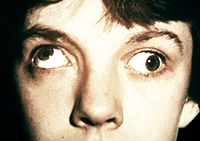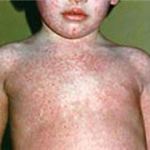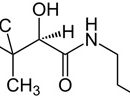The causes of paralytic squint can be infections, tumors, eye injuries, brain. What is characterized by this squint? What to do?
Content
Paralytic squint
 The main leading sign of a paralytic strabismus caused by a violation of the function of one or several oath muscles is the restriction or absence of eye movements towards the action of the affected muscle. It distinguishes him from friendly strabismus.
The main leading sign of a paralytic strabismus caused by a violation of the function of one or several oath muscles is the restriction or absence of eye movements towards the action of the affected muscle. It distinguishes him from friendly strabismus.
A peculiar symptom of a paralytic deputy may be an unusual forced position of the head. It may sound to know the turns of the eyeballs. The patient turns his head in the direction of the action of the affected muscle and so often gets rid of painful two.
In case of violation of the functions of the muscles of vertical action in children, the so-called eye krivoshoy appears: the child tilts the head with the purpose of getting rid of the double. With such a curve, breast-curable-length-like muscle (the muscle turning and tilting his head, their two - right and left) is not changed and the child can keep his head correctly.
True Krivoshi (forced head tilt to the side in combination with a turn of the head in the opposite slope of the side due to damage to the neck muscles on one side) does not depend on the state of the eyes, and the head of the head is due to stiffness, the restriction of the mobility of the breast-curable and large muscle. There is a bias, dizziness. As a result of the deviation of a capacious eye from a normal situation, as with a friendly squint, a binocular vision disorder arises (when two eyes participate in the image - pictures - pictures).
It should be noted, however, it should be noted that the diagnosis of paralytic seproinas is very difficult. Paralytic squint Unlike friendly occurs in children and adults relatively rare (hundredths of the percentage of the entire incidence of the organ of vision).
Paralytic squint may be due to the damage to the corresponding nerves or impaired function and morphology of the muscles themselves. Parabi can be central and peripheral. The first arises due to volumetric, inflammatory, vascular or dystrophic changes and injuries of the brain, and the second — With similar processes and injuries of the soccer and the nerve branches themselves. Changes in muscles and nerves can wear an innate character or arising from infectious diseases (diphtheria), poisoning (botulism), phlegmon (widespread suppuration) of the society and often as a result of direct injury (gap the muscle itself). Congenital paralysis are infrequent and there are usually combined (several eye muscles are amazed).
With simultaneous paralysis of all eye nerves, complete ophthalmoplegia comes, which is characterized by immobility of the eye, ptosis (upper eyelid) and the expansion of pupil.
Treatment
Treatment of paralytic area consists primarily in the elimination of the underlying disease, the consequence of which it was (infections, tumors, injury, etc.). If, as a result of the measures taken, paralytic squint does not disappear, it may be question about operational intervention.
The testimony and time of operation can be determined only with the relevant specialists (neuropathologist, oncologist, infectiousist, etc.). Post-traumatic squint, as a rule, is corrected by the operational way after at least 6 months from the moment of damage, since in this case regeneration (restoration) of both muscles and nerve, and therefore partial and complete restoration of their functions.









